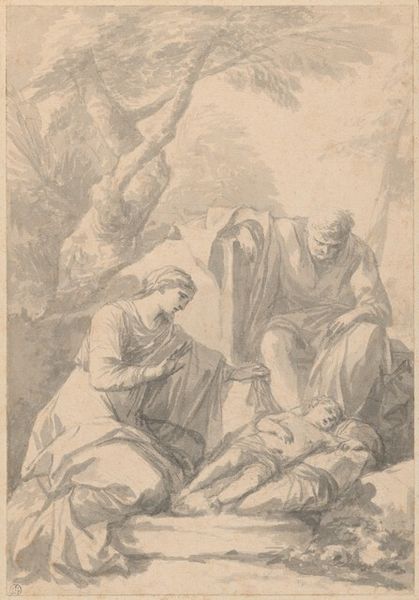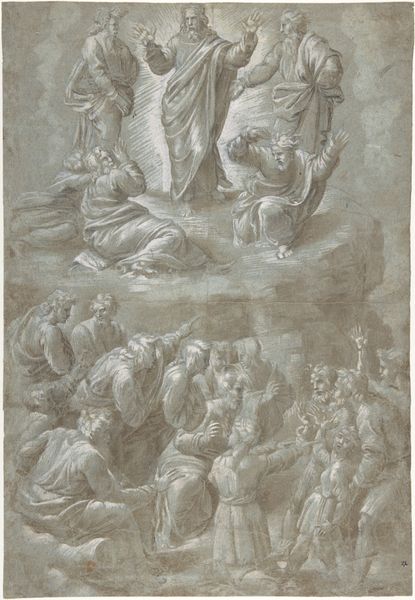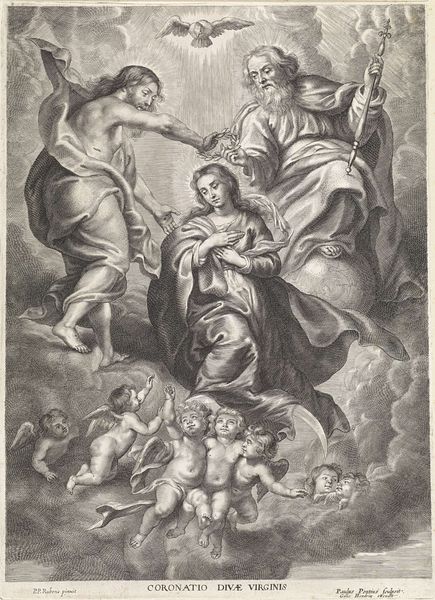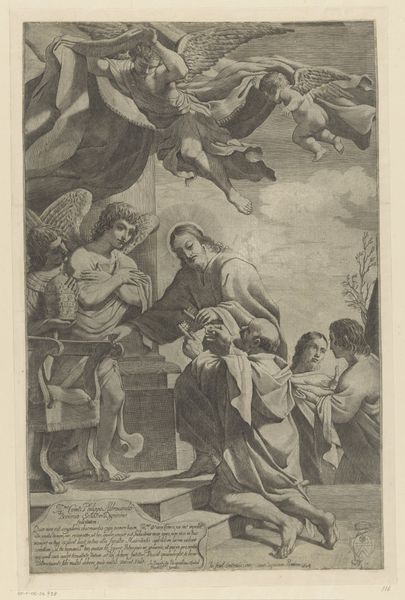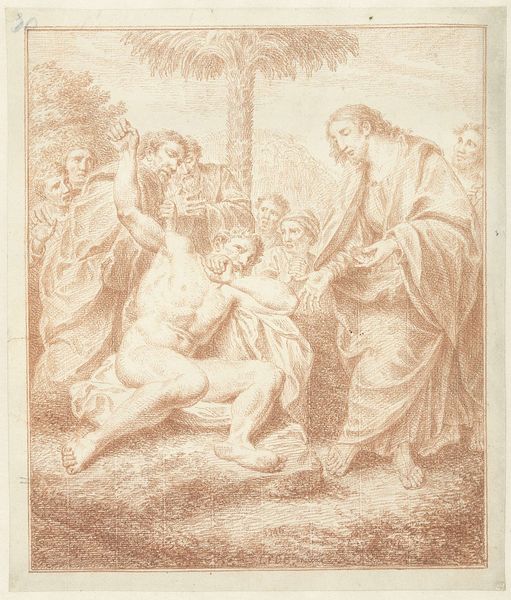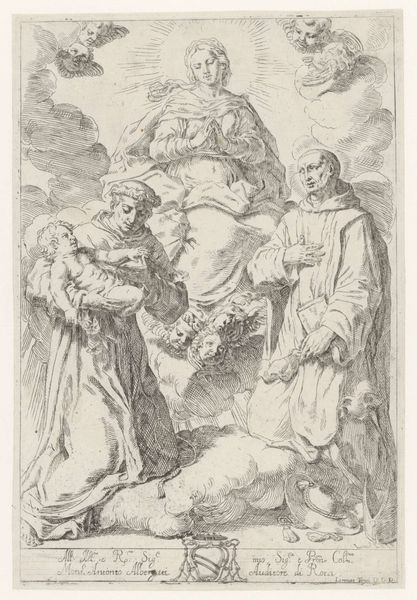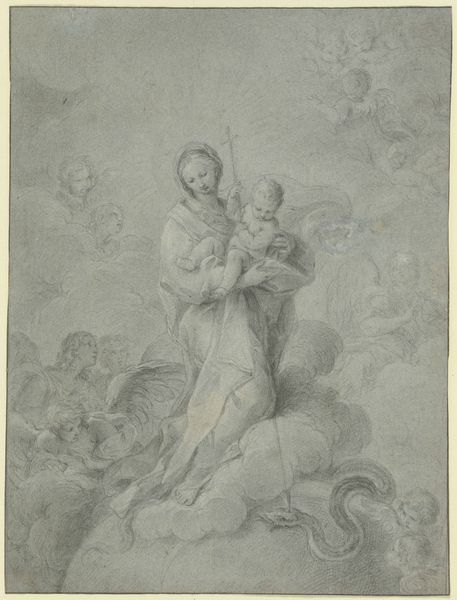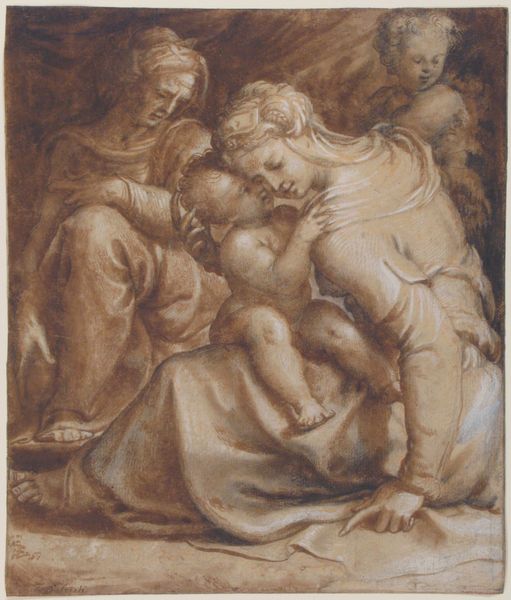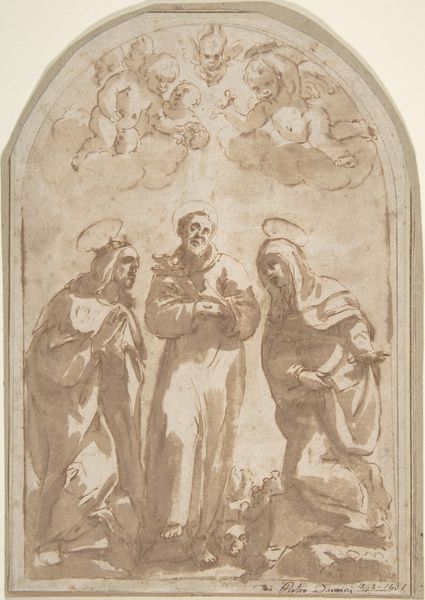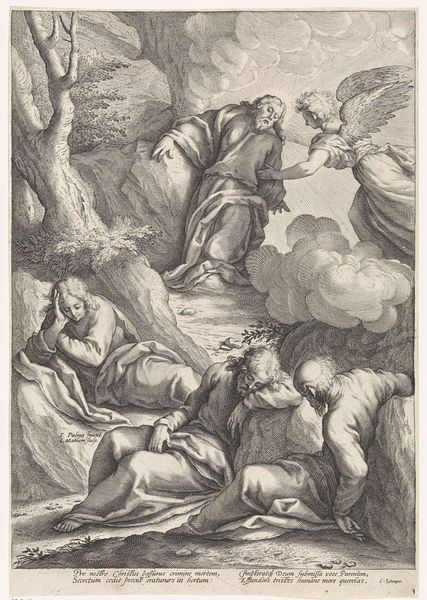
drawing, red-chalk
#
portrait
#
drawing
#
red-chalk
#
figuration
#
15_18th-century
#
portrait drawing
#
rococo
Copyright: Public Domain
Curator: Here we have "Kind in einer Wiege, von vier Frauen umgeben", held here at the Städel Museum, executed by Bernhard Neher the Elder, probably sometime in the 1700s. Editor: My first impression? It's incredibly tender. The composition is almost like a swirling vortex, centered on the child. But rendered entirely in red chalk? It lends a sort of warmth, an intimate feeling like witnessing something private. Curator: Indeed. Red chalk, or sanguine, was a favored medium in the 18th century for preparatory sketches but also for finished drawings in their own right. Its earthy tone offered a compelling alternative to ink. Consider the material conditions: the accessibility of the chalk itself, its cost relative to other pigments, and the way it lent itself to quick studies and more elaborate compositions. Neher would have been highly attuned to these factors. Editor: And how the availability of these materials and skills within a workshop setting affected output. Think about the socio-economic status implied by the material as well. But back to the image – the artistic skill lies also in what’s suggested but not fully defined. The architectural setting feels dreamlike, ephemeral. Also that figure in the upper right, floating on a cloud - who is that? Is that a saint overseeing this birth? Curator: Quite possibly. The setting seems to blend domesticity with the divine. Notice the textures Neher creates – the soft folds of the women's clothing versus the smooth skin of the baby. Also, the layering – look at how he uses the chalk to build up shadows and depth, really emphasizing the dimensionality of the scene, creating a sense of atmosphere using this limited medium. Editor: That points towards how religious narratives were being reimagined through domestic intimacy in this era. This wasn't just a depiction of labor; it was shaping ideals around motherhood and childhood itself. The politics of image-making at play, even within a religious context, fascinates me. Curator: Exactly. And how an artist utilizes a readily available, affordable medium like red chalk to create an artwork brimming with such complexity and sentiment… It speaks volumes. Editor: Well, seeing this from a production viewpoint definitely illuminates how form and function intertwine with socio-historical values, shifting our perspective. Curator: Indeed. It challenges how we perceive drawings as studies for larger paintings, prompting us to think about their standalone artistry. Editor: Thanks, I agree completely. It adds many new perspectives to how we look at the social role of artistic creation.
Comments
No comments
Be the first to comment and join the conversation on the ultimate creative platform.
